Cichlids are an unusually diverse group of aquarium fish, among which there are both real giants and dwarfs. The last group, according to logic, should include only the smallest representatives, but in reality, everything turns out to be a little different. Dwarf cichlids in aquaristics are usually called fish, the size of which is an adult state does not exceed 14 cm. However, size is often not the only criterion, besides this, the fish must have a rather peaceful character (the ability to get along with even smaller species), not cause serious harm to the aquarium plants, do not dig soil, etc.
Apistogramma
Apistograms can rightfully be called “reference” dwarf cichlids. It is a vast group of fish found in the tropical rivers of South America. The average size of adults in an aquarium is 7 cm, so an aquarium of 40 liters or more will be sufficient for keeping a small group in most cases.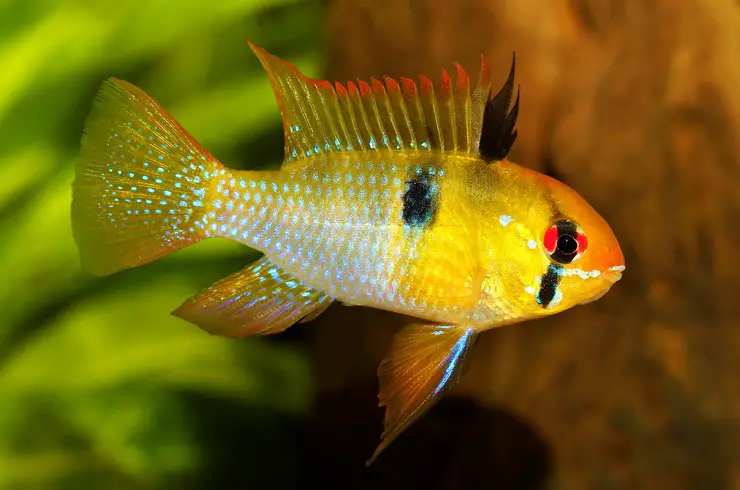
In addition to their small size, apistograms have a couple of undeniable advantages, the main of which is their amazing body color. This is a real “rainbow fish”, its scales can be painted in yellow, blue, red, turquoise, and other colors, although there are variations with a single color. The second important feature of these fish is their peaceful nature. They are great for keeping in a shared aquarium, even with small species that they can drive out of their corner of the aquarium to the maximum.
A small fly in the ointment in the content of apistograms is their high sensitivity to water parameters.
Lamprologus
Lamprologus are inhabitants of the African lake Tanganyika? This group of fish is rather heterogeneous, the size of the representatives varies from 2 to 12 cm. The so-called “shell” lamprologuses deserve the special interest and love of aquarists. These are species whose life cycle is inextricably linked with the empty shells of lacustrine gastropods. Fish shells are home, refuge, and breeding grounds. Lamprologuses are very attached to their home and leave it only when they no longer fit in the old living space. Clashes can often be observed if two individuals choose one shell.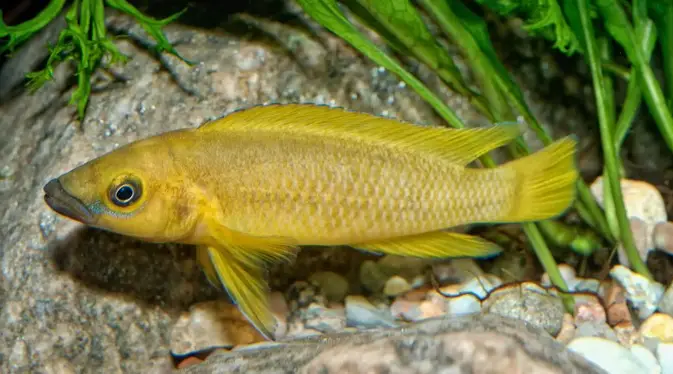
To keep lamprologus, you need an aquarium of 40 liters or more (for large species – from 100 liters). The fish are well compatible with calm, proportionate species.
Pelvicachromis pulcher
Pelvicachromis pulcher is a fish widespread in tropical regions of Africa. This is a variegated cichlid, which reaches a size of 10 cm. In the color of pelvicachromis, brown, cherry, golden, and other shades are found. It is one of the brightest colored dwarf cichlids. The scales on the sides from different angles of view shimmer with lilac and azure colors. True, for this, the fish must be kept in suitable conditions – if they feel uncomfortable, then the color fades greatly. Due to the variegated colors and a slight bend of the muzzle (like a beak), pelvicachromis are called “parrots”.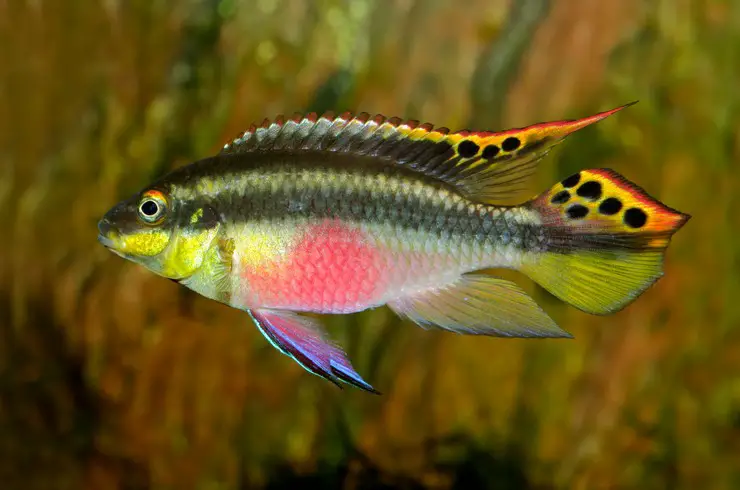
To contain one pair of fish, an aquarium with a volume of 40 liters will be enough, but if there is a desire to have several pairs, then the volume will have to be increased, as well as to delimit the territory with the help of decorations.
In general, pelvicachromis pulcher is a peaceful fish, however, it is better not to pick up slowly swimming fish or those with veil fins in the neighbors. The aggression of these cichlids is especially strong during the spawning period.
Princess Burundi
Princess Burundi belongs to the genus Neolamprologus, but I would definitely like to single out her from the mass of relatives. The cichlid stands out for its elegance and distinctive, pointed-toed veil fins. At first glance, this fish does not have a bright color, but if you look closely, you can find many amazing details. The princess of Burundi can grow up to 10 cm, the life expectancy in an aquarium is 7-10 years.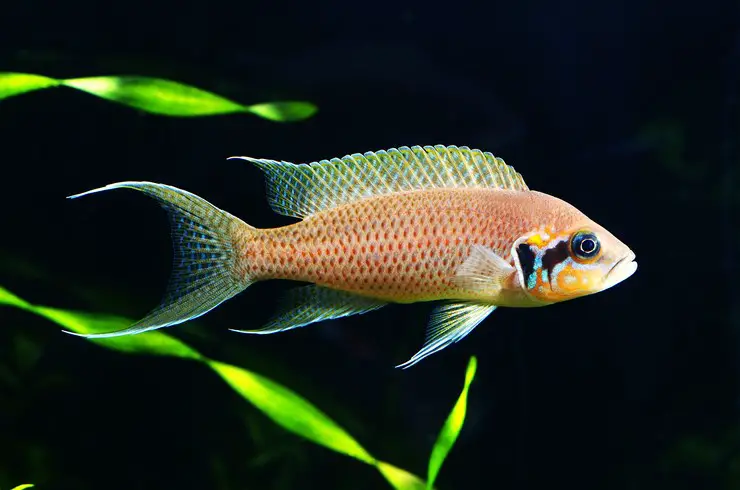
You can keep fish in pairs in aquariums from 60 liters. Be sure to give the Princess of Burundi plenty of space to swim without cluttering the aquarium with decorations. The species is extremely peaceful and coexists well even with smaller relatives.
Yulidochromis
Yulidochromis in their natural habitat inhabits the African lake Tanganyika. Fish have a remarkable body shape and color, it is extremely problematic to confuse them with other groups. The size of the fish varies from 8 to 15 cm.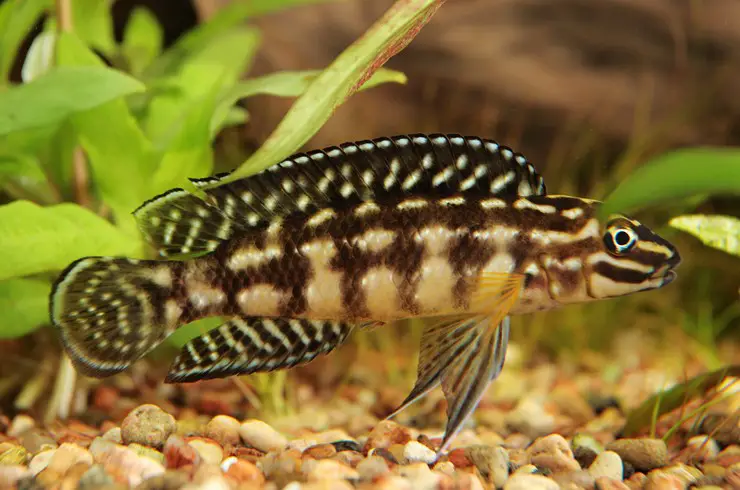
An aquarium with a volume of 100 liters or more will be optimal for keeping a pair of fish. Unfortunately, adult Julidochromis are not very tolerant of each other, so it is better to limit yourself to one formed pair, which, oddly enough, remains in the fish for life. Yulidochromis get along much better with other commensurate cichlids.

